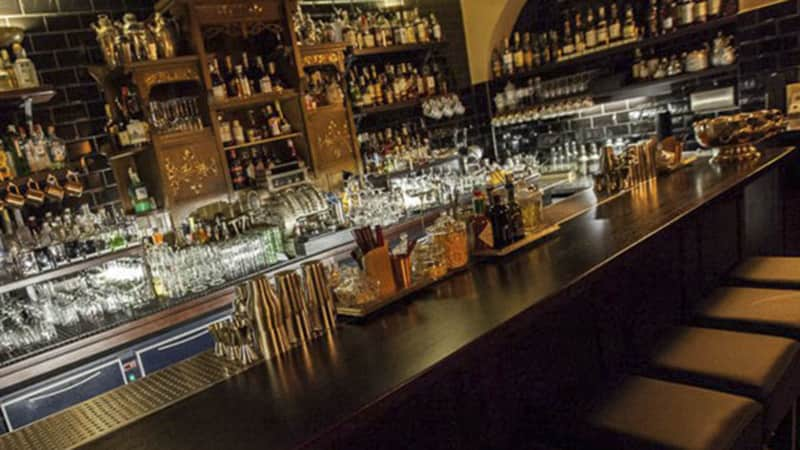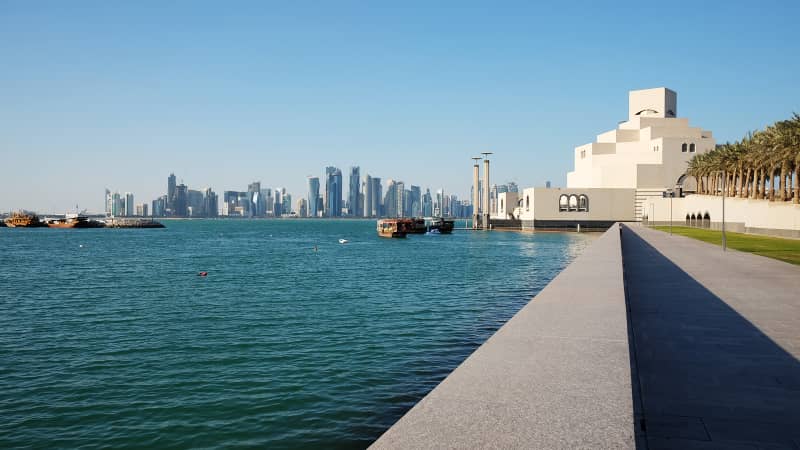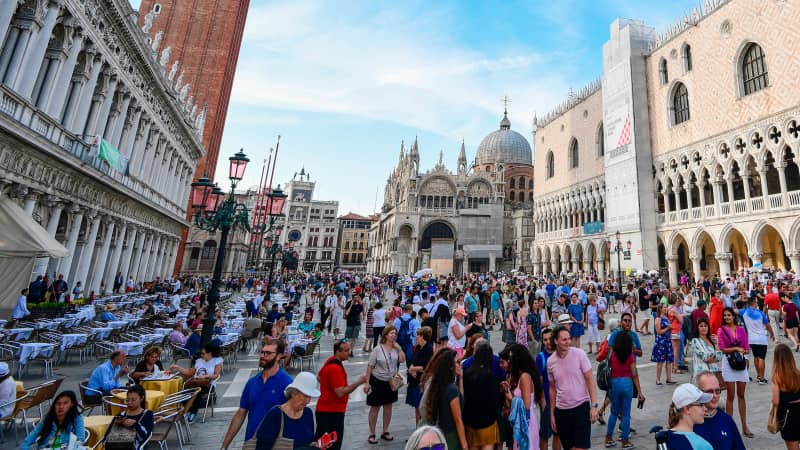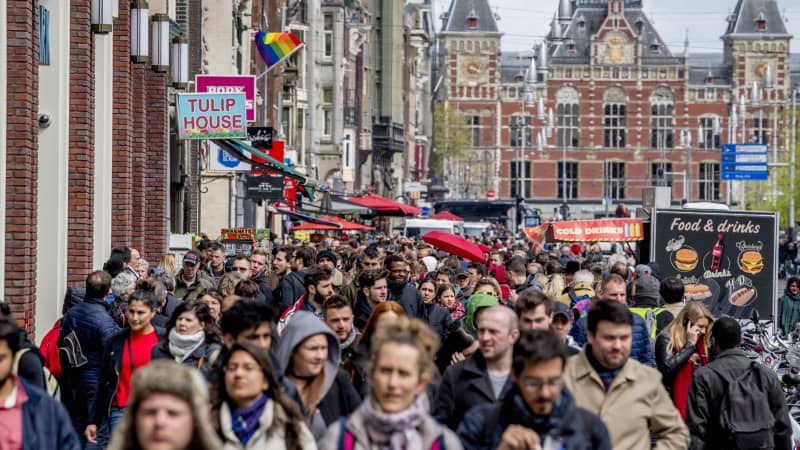(CNN) — Rowdy groups of bachelor parties. Backpackers asking locals to pay their way. The hordes that pour daily off cruise ships, choking up city centers.
But today, with traveler numbers becoming out of control, and tourists dwarfing local populations in popular cities from Amsterdam to Venice, things have changed.
Stags and hens out of favor

Cities like Prague and Budapest are trying to discourage hard-drinking bachelor groups
Hemingway Bar
Since founding the company in 1999, the market has changed dramatically, he tells CNN. In the past, destinations that were less desirable to a global market would court travelers wanting to go to cheaper, more “adventurous” places — including bachelor groups.
But as previously little visited destinations get more mainstream, the intrepid travelers are getting pushed out.
“Budapest is a great example — back in the early 1990s, it was probably on the frontier of where people thought was OK to travel to,” says Mavir.
“But now, people go to Budapest with your spouse, girlfriend or boyfriend, with the kids — it’s not like Paris, where everyone’s been, and it’s easy to get to.
“All of a sudden, hoteliers with rooms you’d have picked up for next to nothing are thinking, ‘Would I rather have couples and people who are definitely not going to cause any problems, or a group of 12 lads who’ll probably be fine but might not be?’
“Do people ever really, really want stags? I don’t think they do.”
Of course, there’s a reason bachelor parties have a bad reputation, but Mavir says that groups using a tour operator tend to be better behaved — all his clients are assigned a tour guide for the duration of their stay. What’s more, they’re of the opposite sex — which tends to make the visitors better behaved, he says.
“Our guys have spent more money, they’re slightly more cultured, more interested in doing activities, and we take deposits, itinerarize and guide them. For hotels, you’ve got 12 guys who will drink in your bar and be reasonably well behaved — that can add to your hotel.
“Once you take [a bachelor group] and realize they’re not as bad as you think, it’s OK, but if you’re trying to make things classier you’re probably looking for more couples. And that has a knock-on effect.”
Authorities cracking down on begpackers
Bachelor parties aren’t the only kind of tourists being squeezed out by destinations. Over the last two years, social media has seen the rise of “begpackers,” who busk or ask for money in the street to fund their travels.
Begpackers have also been called out by disgruntled locals in destinations from Hong Kong to Seoul, says Denis Tolkach, assistant professor at the School of Hotel and Tourism Management at Hong Kong Polytechnic University.
“It has definitely created a lot of negative commentary online,” he tells CNN. “The reaction of the authorities appears to be related to the negative media.”
Before the current political protests, Hong Kong was a begpacker hotspot, says Tolkach — adding that Thailand, Malaysia, Indonesia and South Korea are also seeing the phenomenon.
“Some busk, try to develop their performance skills, others beg and may even attempt to deceive local residents claiming they lost their wallet.”
Tolkach says that authorities around Asia are “definitely” cracking down on the practice.
“The reaction of the authorities appears to be related to the negative media. Some of our begpacker interviewees noticed that the attitude from the police has changed. It has become more likely that police check their documents and ask them to leave.” However, he says that arrests “appear to be rare.”
Bali isn’t the only destination to be cracking down. Tolkach says that border officers in Thailand may ask for proof that a potential visitor has enough money for their stay, and Hong Kong has got stricter on the “visa run” that backpackers used to do — traveling to nearby Macau for the day to “reset” their visa stay.
Backpackers not welcome

Qatar wants visitors who’ll patronize its museums, not backpackers
Barry Neild/CNN
Every destination wants to maximize its income from tourism, of course — but while many places encourage luxury travelers, others are going all out to discourage backpackers and those on a lower budget.
“We don’t want people to come for a $50 room to lie on the beach all day and walk around with a backpack and shorts,” he said. “These are not the type of people we’re targeting.”
“Normally the backpackers are just there to lie on the beach and spend as little as possible,” said Akbar Al Baker.
Neither Qatar Airways or the Qatar Tourism Authority responded to a request for comment.
Australia — long known as a destination for young travelers, who often work their way around the country — introduced a controversial “backpacker tax” in 2017.
It doesn’t look like things will change any time soon for budget travelers.
“Most destinations are focusing on high-yield market segments now,” says Denis Tolkach. “Backpackers are traditionally known for exploring destinations off the beaten track, purchasing local products and interacting with local residents, but in large numbers they can inflict damage to the local environment, culture and community through partying and misbehaving.”
There is one place actively appealing to younger travelers, however. In 2018, Vilnius, the capital of Lithuania, launched a media campaign ad billing itself as “the G-spot of Europe.” The campaign was recently shortlisted for the “best city destination campaign” at the 2019 International Travel and Tourism Awards.
Inga Romanovskienè, director of Go Vilnius, tells CNN that the campaign aimed to position the city as “an alternative European city break destination” to the “millennial market with disposable income and an interest in lesser known destinations and experiences.”
The campaign specifically targeted visitors aged 18-35 from Germany and the UK, and it has paid off, with German visitors up 37.8% year on year, and UK guests up 20.5%.
“Our goal is to attract more young, curious travelers,” says Romanovskienè. “I think we’re on the right track to achieving this.”
No entry for day trippers

‘Hit and run’ daytrippers are ruining Venice, say locals
MIGUEL MEDINA/AFP/Getty Images
Venice has a name for the tourists that do the most damage: “mordi-fuggi”, or “hit and run.”
Four out of five visitors to the lagoon city are daytrippers — and with 20 million of them a year, they outnumber residents on a typical day.
“As they don’t stay overnight, they do not pay the tourist tax and therefore do not help residents pay to clean and maintain the city — although they have left trash and used the infrastructure.
“And they don’t see the city off-the-beaten-path or seek to spend their time and money at small local businesses which are fighting to survive.
“This also means that most of the businesses on that main axis are having a hard time to survive, if they are not catering to the needs and habits of visitors in a hurry. This is one of the reasons why cities like Venice are losing their authenticity and identity.”
Duflot calls daytripping “a symptom of an industry that has gone wrong.” The local authorities are currently drawing up plans to introduce an entrance tax for daytrippers, but the start date has already been pushed back, and there’s confusion about how it will be applied.
Dubrovnik, another victim of overtourism. It is also planning to introduce prebooking for bus and coach visitors, allowing just 10 buses to decant tourists every 30 minutes. Authorities will monitor the crowds in the city, and if they get too large, they will cancel some bus permits.
“On a busy day, we can cut three or four buses — it’s a valuable tool to plan,” Dubrovnik mayor Mato Franković told CNN.
The city already charges buses a drop-off fee which works out at around €5 ($5.50) per passenger. From 2021, it will also charge approximately €4 ($4.40) for cruise visitors.
Cruising for a bruising

Cruise passengers have been blamed for overcrowding in Dubrovnik
Crystal Cruises
All around the world, cruise ships are being blamed for overtourism, as ships disgorge thousands of passengers every day. The famously bijou ports of Europe are particularly badly hit.
The spotlight has inevitably been on Venice, where locals have staged regular protests against the cruise ships docking in the city center, dwarfing their surroundings.
In June 2019, a ship even crashed into a city center dock.
Dubrovnik is another city struggling to deal with the cruise crowds, and again, locals are taking action themselves.
One local travel agency even decided in summer 2019 to stop working with any visitors who were taking a cruise in Croatia.
“I was sickened,” he says of the stories. “So we tell anyone who’s taking a cruise that we simply won’t work with them… due to environmental reasons.
“We keep getting requests for day trips and I keep sending them the articles saying they should be aware that [cruises cause] a lot of damage.”
They have honored this season’s commitments, he says, but expect to turn down up to 300 bookings for next year.
“Travel is a wonderful business when you help travelers to really see Croatia and have a big impact on the local economy,” he says.
“It can be done in the proper way, but a cruise ship is not that.”
He says that cruise passengers, rather than other tourists, are “seriously damaging Dubrovnik” because of their sheer concentration.
“There’s an opportunity for everyone to visit Dubrovnik, but it has to be done in the proper way. Dubrovnik can do well with smaller ships, but [hosting] those with 3,000 people onboard is just insane. They’re all hurrying to Dubrovnik old town, hoping to pay as little as possible.
“The benefit for the local economy is zero.”
Grouping travelers together

Amsterdam is cracking down on group tours
ROBIN UTRECHT/AFP/AFP/Getty Images
Think booking a group tour will make your trip easier? Not in some destinations, which are making a stand against large groups.
Amsterdam has introduced legislation to ban groups of over 15 people in the center from 2020, as well as banning tours of the Red Light District entirely.
“We are banning tours that take visitors along sex workers’ windows, not only because we want to prevent overcrowding in the Red Light District, but also because it is not respectful to sex workers. It is outdated to treat sex workers as a tourist attraction,” Deputy Mayor for Economic Affairs Simone Kukenheim told CNN.
The Dutch capital has also banned “free” tours, where guides encourage followers to join them, and request a donation at the end. Travelers on any group tour will also have to pay a tax, which is currently set at fee, currently set at 66 cents ($0.73).
Barcelona banned groups of 15 or more from the famous La Boqueria food market at peak times in 2015, after locals complained of being disturbed while grocery shopping.
The Japanese temple of Nanzo-in in Fukuoka Prefecture, famous for its huge reclining Buddha, refuses entry to foreign tour groups. It follows on the heels of the temporary closure of the Yatsushirogu shrine in Kumamoto Prefecture, reopened to visitors in 2018 having shut its doors on days that cruise ships were in port.
With global tourism hitting record figures — 1.4bn tourist arrivals in 2018, according to the UN’s World Tourism Organization — destinations look set to become more and more likely to streamline who they want to let in.
So even if you don’t care about the effects your stay has on the local community, the community may be about to make you care.
